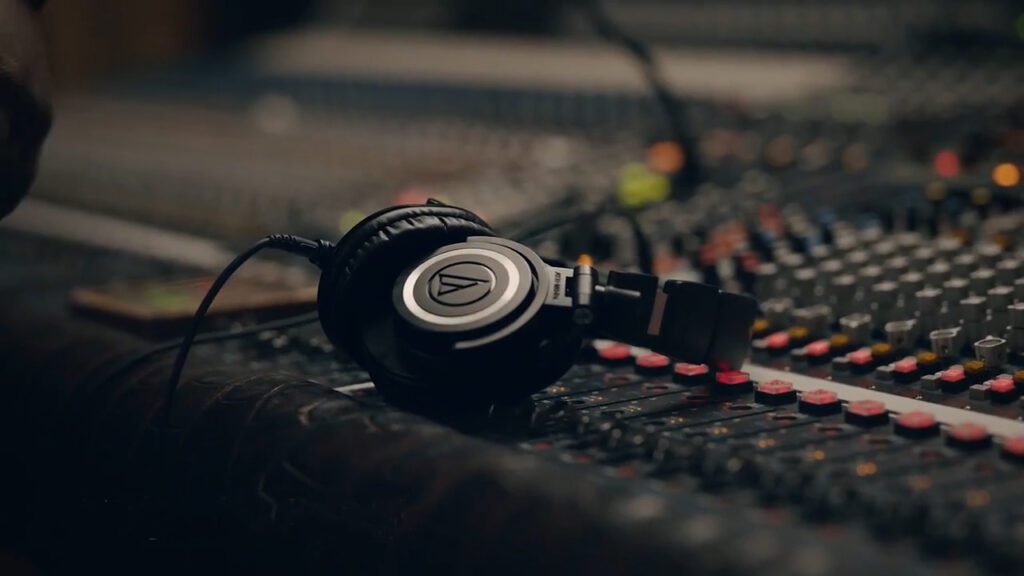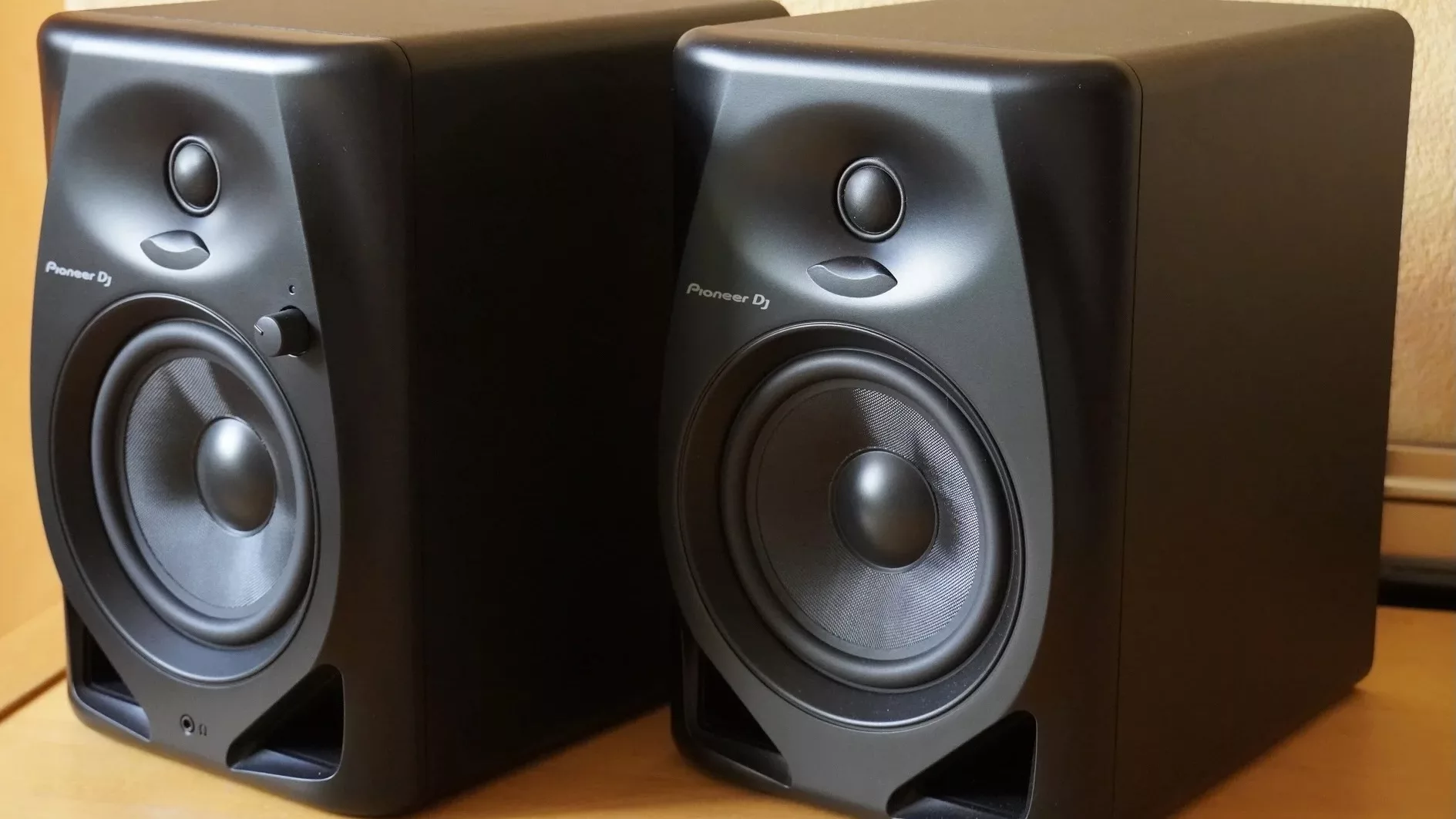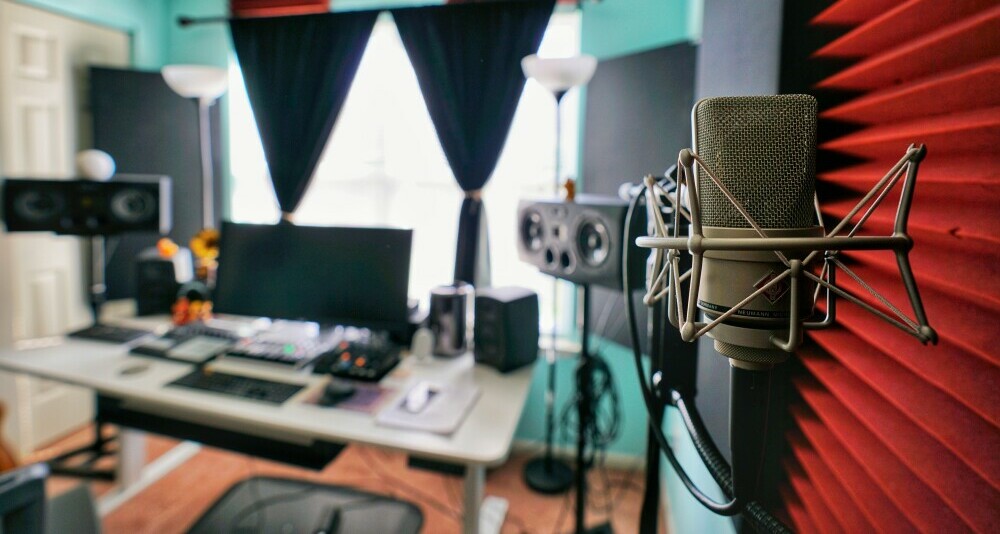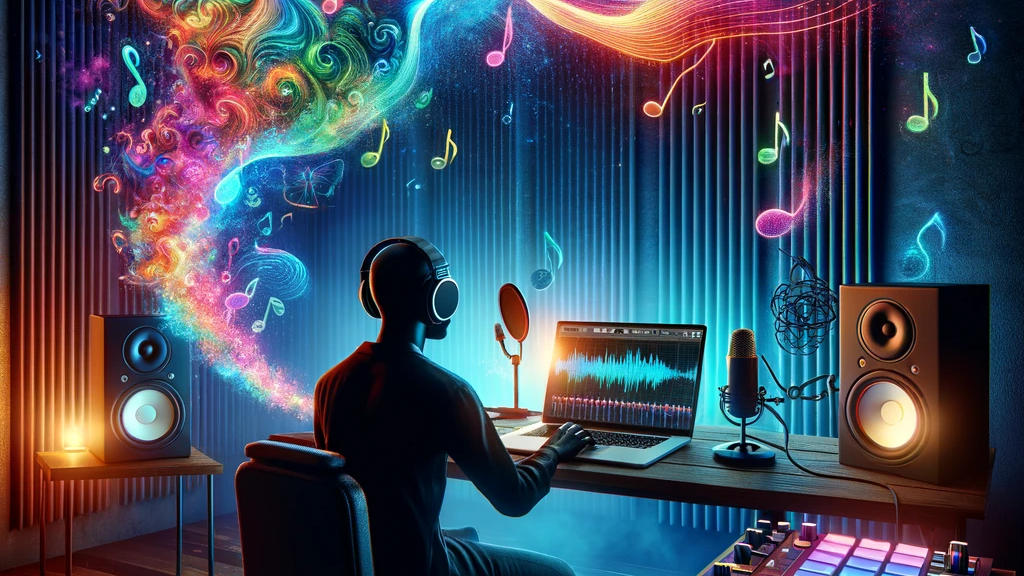Mixing on headphones v studio monitors. Is one better than the other?
When mixing audio it’s essential you are able to hear the finer details of every sound so you can make subtle adjustments.
What am I talking about?. Headphones, often personal and intimate, provide a direct audio path to your ears without the influence of room acoustics. But Studio monitors are speakers engineered for an accurate reproduction of audio in a controlled environment.
Through decades of innovation, mixing equipment has advanced a lot, leading to an endless variety of choices that can either elevate or complicate the mixing process. Today, headphones can offer high fidelity that rivals traditional studio setups, while studio monitors continue to benefit from technological advancements in acoustics and design.
Table of Contents
So here we go. I’m going to attempt to give you a snapshot of the benefits and limitations that come with using these two different tools. With the proper insight, fingers crossed it makes the decision of which way you go easier.
So what are the potential differences in the final audio we work so hard to perfect?
>>> Choosing the Right Headphones For You <<<

Mixing on Headphones vs Studio Monitors
The experience of mixing audio on headphones versus studio monitors is like painting with two different types of brushes. There’s no right or wrong. But each tool gives you a distinct texture and character to the final mix. To really understand this you need to dive deeper into the actual sound characteristics that output from each device.
Headphones typically offer an exaggerated frequency response. While some models aim for neutrality, most headphones accentuate bass and treble frequencies to cater to consumer preferences. This can either mask or exaggerate certain elements in your mix. Studio monitors, in contrast, strive for flat frequency response, aspiring to reproduce sound without coloration to ensure the mix translates well across various playback systems.
Next comes the concept of the soundstage. When I mix on studio monitors, I’m surrounded by a three-dimensional space where each instrument’s location is perceptible. Headphones, however, place the soundstage directly in my head, which can sometimes lead to a less natural perception of spatial cues. Despite advances in headphone technology, this is an aspect where studio monitors maintain an edge.
One can’t discuss studio monitors without addressing room acoustics. Monitors are at the mercy of the room’s dimensions and surfaces, which can introduce reflections, resonances, and standing waves. These unwanted artifacts need to be managed with acoustic treatment. With headphones, these variables are practically eliminated, offering a consistent and controlled environment, regardless of the physical space.
Stereo separation is another consideration. While monitors provide a realistic sense of ‘air’ and distance between sounds, headphones can cause an exaggerated sense of separation, leading you to make different mixing decisions. Crossfeed is often used in headphone mixing to emulate the natural bleed between left and right channels, as it occurs with studio monitors, helping to create a more cohesive stereo image.
>>> Review: Audio-Technica ATH-M50x 🎧 <<<
 Practical Considerations for Mixing
Practical Considerations for Mixing
So, you’ve got a handle on the audio properties distinguishing headphones from studio monitors. But there are still some key practical aspects to get your head around before making an informed choice.
Never underestimate the power of reference tracks. They’re your roadmap to consistent sound across different systems. Just as a chef tastes a dish against a tried-and-true recipe, you’ll use these to check the accuracy of your mix on headphones or monitors.
Mixing can be a marathon, and ear fatigue is a real concern. To counter that, volume management and regular breaks are your allies. I swear by setting volume limits and sticking to a schedule of frequent pauses to keep your ears sharp. Nothing beats having a break and then coming back to listen again with fresh ears.
Other considerations are budget and space. If your budget is tight or your room isn’t acoustically treated, headphones may be your best bet. Studio-quality headphones are more affordable and don’t require a special environment to deliver a consistent sound.
On the other side of the fence, good studio monitors aren’t just about the initial price. They also demand a supportive room setup to shine. But when you’re ready to invest in this, the returns in sound fidelity can be substantial.
One more thing to consider is the extra gear. A quality headphone amplifier can really bring out the best in your headphones. Similarly, a good monitor controller can help you manage your monitors’ levels and inputs with precision.
So boom, you have the background; you know what you’re listening for; and now, you understand the practicalities. So how to you apply this knowledge to achieve professional, well-balanced mixes?
>>> Tips For Achieving A Clean And Clear Mix <<<
 Tips and Techniques for Professional Mixes
Tips and Techniques for Professional Mixes
I talked about the intricacies of both the worlds of mixing on headphones and studio monitors, each with its unique advantages and disadvantages. They are both important tools for mixing, but how you use them can make a substantial difference in the final mix. It’s about strategy and understanding the strengths of each medium.
When mixing on headphones, remember to consider the hyper-detail they provide and use it to your advantage for tasks like surgical EQ adjustments or critical listening for noise and artifacts. However, don’t rely solely on them; switch to monitors periodically to check how the mix translates in an open space.
Taking breaks isn’t just good advice; it’s a vital practice for consistent mixes. Ear fatigue can deceive your perception of sound, leading to mixes that don’t translate well. Regular breaks ensure your ears remain fresh, giving you an accurate representation of your mix.
Beyond the use of your primary mixing mediums, calibrating your studio monitors can drastically improve the accuracy of your mixes. Consider using room correction software for both monitors and headphones to compensate for any acoustic shortcomings of your mixing environment.
Lastly, always keep an eye out for new technology and software you can add to your studio to make the process easier and better. New products are being released all the time that make mixing easier and give you precision and control that was previously unimaginable. By combining traditional mixing approaches with cutting-edge tools, you’re crafting a mix that stands up to professional scrutiny and stands out on any playback system.




